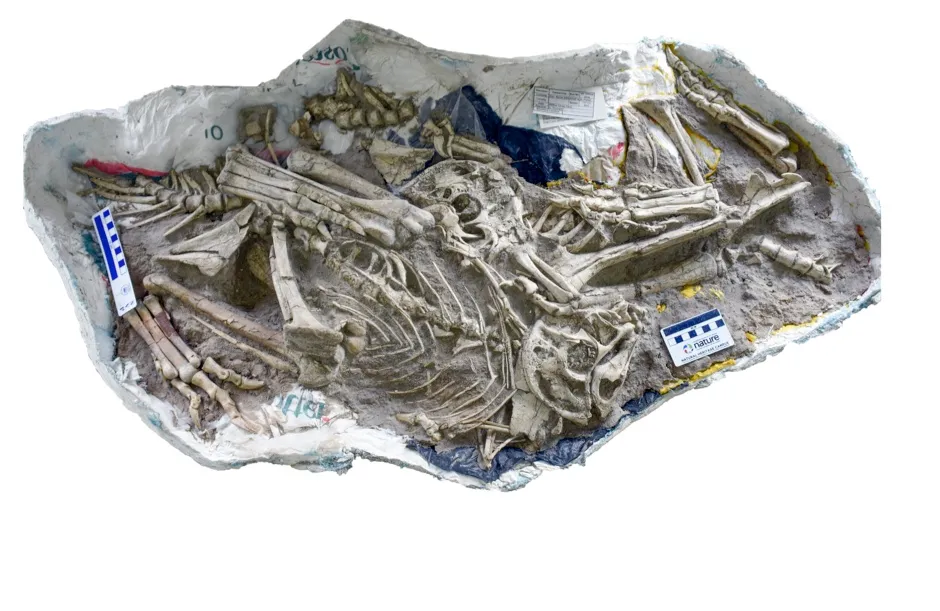Sometimes less really is more: the evolutionary loss of a finger may have helped a group of parrot-like dinosaurs to thrive more than 68 million years ago. Multiple complete skeletons of a new species of oviraptor - feathered, omnivorous creatures sporting large, toothless beaks similar to parrots - were unearthed in the Gobi Desert in Mongolia and subsequently studied by researchers from the University of Edinburgh.
Dubbed Oksoko avarsan, the newly discovered dinosaurs were found to have just two fingers on each forelimb – one less than other members of the oviraptor family. This is the first time digit loss has been observed in the three-fingered family of oviraptors and may suggest adaptability which enabled the animals to spread during the Late Cretaceous Period in which they thrived, researchers say.

The team also discovered that Oksoko avarsan were social as juveniles as the fossil remains of four young dinosaurs were preserved resting together.
Read more about dinosaurs:
- What did dinosaurs evolve from?
- Dinosaur discovered on the Isle of Wight a relative of T. rex
- Dinosaurs' flying relatives could hold key to building better drones
“Oksoko avarsan is interesting because the skeletons are very complete and the way they were preserved resting together shows that juveniles roamed together in groups,” said study leader Dr Gregory Funston, of the University of Edinburgh's School of GeoSciences.
“But more importantly, its two-fingered hand prompted us to look at the way the hand and forelimb changed throughout the evolution of oviraptors - which hadn't been studied before. This revealed some unexpected trends that are a key piece in the puzzle of why oviraptors were so diverse before the extinction that killed the dinosaurs,” he added.

The team also tracked the reduction in size, and eventual loss, of a third finger across the oviraptors’ evolutionary history. They found that the animals’ arms and hands changed drastically in tandem with migrations to new geographic areas - specifically to what is now North America and the Gobi Desert.
The fact that oviraptors were able to evolve forelimb adaptations suggests that they were able to alter their diets and lifestyles more quickly and efficiently than other dinosaurs, enabling them to diversify and multiply, the researchers say.
Reader Q&A: Would the dinosaurs have eaten us if we were alive at the same time?
Asked by Sarah Deery
Let’s imagine humans living 66 million years ago, alongside the biggest meat-eating dinosaur of all,Tyrannosaurus rex.T. rexsurely would have been able to eat people. There are fossil bite marks, matching the teeth ofT. rex, on the bones ofTriceratopsand duck-billed dinosaurs such asEdmontosaurus, which were both over 50 times heavier than an average person. But that doesn’t mean we would be hunted to extinction.
Like the prey of lions and tigers today, we would have been in danger, but found ways to survive. Many dinosaurs that were smaller than us survived alongsideT. rex, and none of them had the benefit of our large brains!
Read more:
